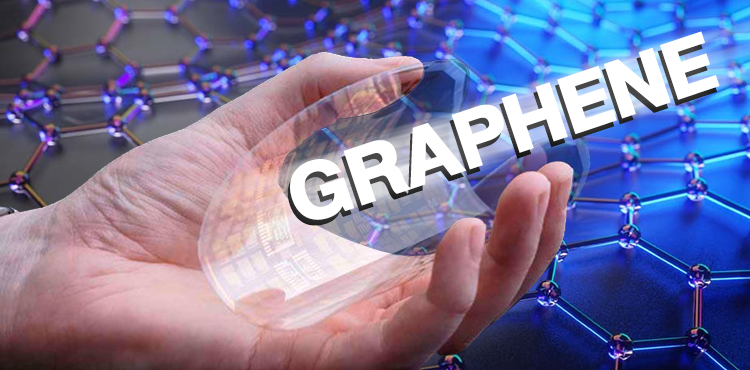Graphene is light, very durable, a superconductor, and an insulator? It can augment rubber to become resilient to extreme temperatures, high and low, resilient enough for space application, be mixed with fly ash to substitute concrete. Hundreds and hundreds of patents involving graphene have been submitted.
So, why haven’t we seen graphene boost up our sneakers, make ultra-light weight bullet proof vest, or make our phone batteries charge up faster with more power? Before we go into that let’s take a look at what Graphene actually is.
Graphene was first observed in 1962 electron microscopes, then in 2004, it was taken out of the cold case drawer of scientific discovery, isolated, had its properties rigorously defined by Andre Geim and Konstantin Novoselov at the University of Manchester. The research was rigorous enough to earn the two researchers the Nobel Prize in Physics in 2010.
Described as a semi-metal consisting of carbon molecules arranged in a hexagonal lattice, structurally similar to graphite, diamond, charcoal, and etc. But unlike the aforementioned materials, graphene is a super conductor of heat and electricity. It also can behave as an insulator and it is the strongest material that humankind have ever come across in our test labs.
To make it simple, (even simpler than what has been simplified from a colossally complicated array of articles with vernaculars that made you cringed when you tried reading a physics paper written by and for actual physicists), graphene is a super material that promises application for products across the board, think ironman suits to explosive proof walls, well maybe not exactly like Tony Stark’s, but you get the picture.
So why haven’t we actually gotten our hands on some of this miracle material? Was it too expensive for practical consumer product application? But with billions upon billions of investment dollars going into the likes of EVs and electronic consumer product R&D, it’s quite hard to believe. Oh, and Samsung has already found a way to make graphene batteries cheap enough, and the production process practical enough to competitively apply it to their phones.
But, there’s still just news of the 12-minute to fully charged mystical battery powered phones. Graphene has such disruptive potentials some compare it to the discovery of plastic, maybe that’s the reason it’s being held back.
China is in the graphene race as well, applying it to batteries, heat-generating jackets, soles of sport shoes, says Xinhuanet. The local government of Fujian province has invested in opening up an institution dedicated to this super material in hopes of gaining an technological edge for local manufacturers dubbed the Fujian Research Institute of Industrial Graphene Technologies. Attracting aspiring researchers and businesses that have caught on to the graphene movement, the local government aims to overcome the crowded manufacturing sector, and rocket its competitiveness as a world producer of consumer goods.
Meanwhile, at Washington State University researchers, Xianming Shi, associate professor with WSU’s Department of Civil and Environmental Engineering, and graduate student Gang Xu have used graphene oxide in a method that utilizes fly ash for making concrete. Fly ash is an environmentally hazardous waste product of coal-based electricity plants. Mixing cement with sand and gravel to make concrete causes five to eight percent of greenhouse gas emissions worldwide.
The new concrete eliminates the need of cement, which is known to be harmful to the environment. The fly ash is used as a binder in the concrete instead of cement. Shi and Xu’s innovative application of graphene enables the world to attack two environmental issues with one solution. Reports Graphene-info.com, along with a constant surge of news on the wonder ingredient.
Graphene will be a disruptor of the world economy for sure, just when? Moreover, how are the less innovative based manufacturers going to fair against this new industrial tsunami? The real reason behind graphene’s debut into the hands of consumers maybe be this, its potential to make all non-graphene incorporated products obsolete.

